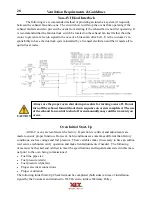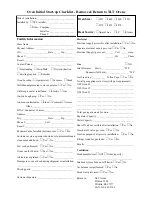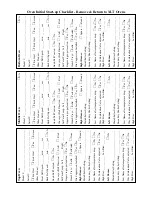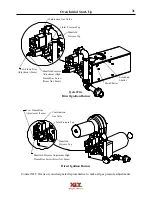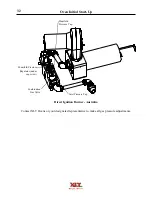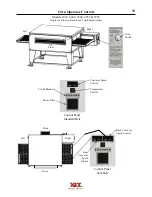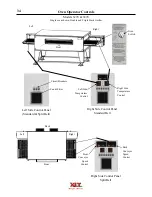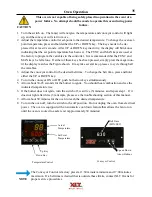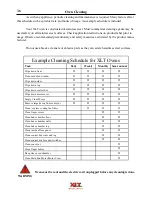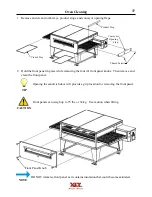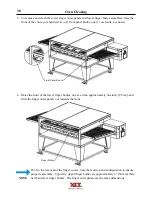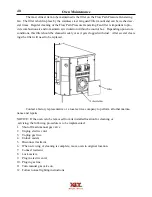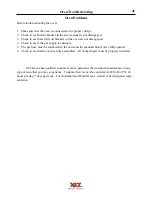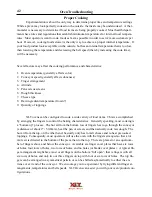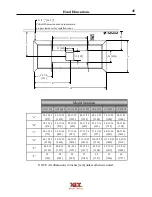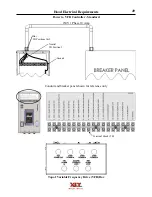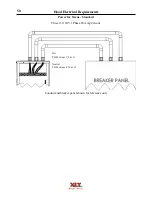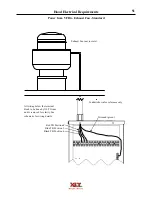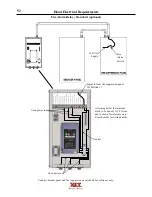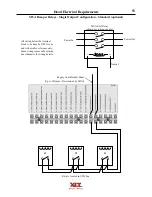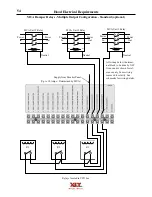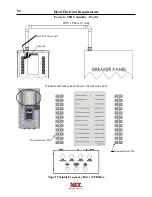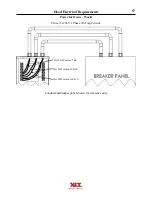
42
Oven Troubleshooting
Proper Cooking
Experimentation is about the only way to determine proper time and temperature settings.
While a pizza may look perfectly cooked on the outside, the inside may be undercooked. A ther-
mometer is necessary to determine if food items are being properly cooked. Most health depart-
ments have rules and regulations that establish minimum temperatures for internal food tempera-
tures. Most operators want to cook foods as fast as possible in order to serve more customers per
hour. However, cooking foods slower is the only way to achieve a proper internal temperature. If
your food product look acceptable on the outside, but has an internal temperature that is too low,
then lowering the temperature and decreasing the belt speed (thereby increasing the cook time),
will be necessary.
Several factors may affect the cooking performance and characteristics:
1. Oven temperature (generally affects color)
2. Conveyor speed (generally affects doneness)
3. Finger arrangement
4. Altitude
5. Pans versus screens
6. Dough thickness
7. Cheese type
8. Raw ingredient temperature (frozen?)
9. Quantity of toppings
XLT ovens can be configured to cook a wide variety of food items. This is accomplished
by arranging the fingers to control the baking characteristics. Generally speaking, most cooking is
a “bottom up” process. The hot air from the bottom row of fingers has to go through the conveyor
(a distance of about 2” / 50.8mm), heat the pan or screen, and then actually cook raw dough. The
hot air from the top, on the other hand, basically only has to melt cheese and re-heat precooked
toppings. Consequently, most operators will use the oven with the fingers arranged so that a lot
more air is directed to the bottom of the pizza than to the top. There are places for an equal num-
ber of fingers above and below the conveyor. Available are finger cover plates that have six rows
of holes, four rows of holes, two rows of holes, and no holes (or blank cover plates). A typical fin-
ger arrangement might have most or all fingers on the bottom “full open”, that is fingers with all
six rows of holes, and only two or three fingers on top with four or six rows of holes. The top fin-
gers can be arranged in a symmetrical pattern or can be shifted asymmetrically to either the en-
trance or exit end of the conveyor. We encourage you to experiment by trying different finger ar-
rangements, temperatures and belt speeds. XLT Ovens can assist you with your oven/product con-
figurations.
Summary of Contents for 1832-AE-B
Page 43: ...43 This page intentionally left blank ...
Page 88: ...This page intentionally left blank ...
Page 95: ...95 Oven Schematic 1832 2440 3240 3255 3855 Square Burner Standard ...
Page 96: ...96 Oven Schematic 1832 2440 3240 3255 3855 Square Burner World ...
Page 97: ...97 Oven Schematic 1832 2440 3240 3255 3855 Round Burner Australia ...
Page 98: ...98 Oven Schematic 3270 3870 Square Burner Standard RH Control Box ...
Page 99: ...99 3270 3870 Square Burner Standard LH Control Box Oven Schematic ...
Page 100: ...100 Oven Schematic 3270 3870 Square Burner World RH Control Box ...
Page 101: ...101 Oven Schematic 3270 3870 Square Burner World LH Control Box ...
Page 102: ...102 3270 3870 Round Burner Australia LH Control Box Oven Schematic ...
Page 103: ...103 Oven Schematic 3270 3870 Round Burner Australia RH Control Box ...
Page 104: ...104 Hood Schematic Standard ...
Page 105: ...105 Hood Schematic World ...

